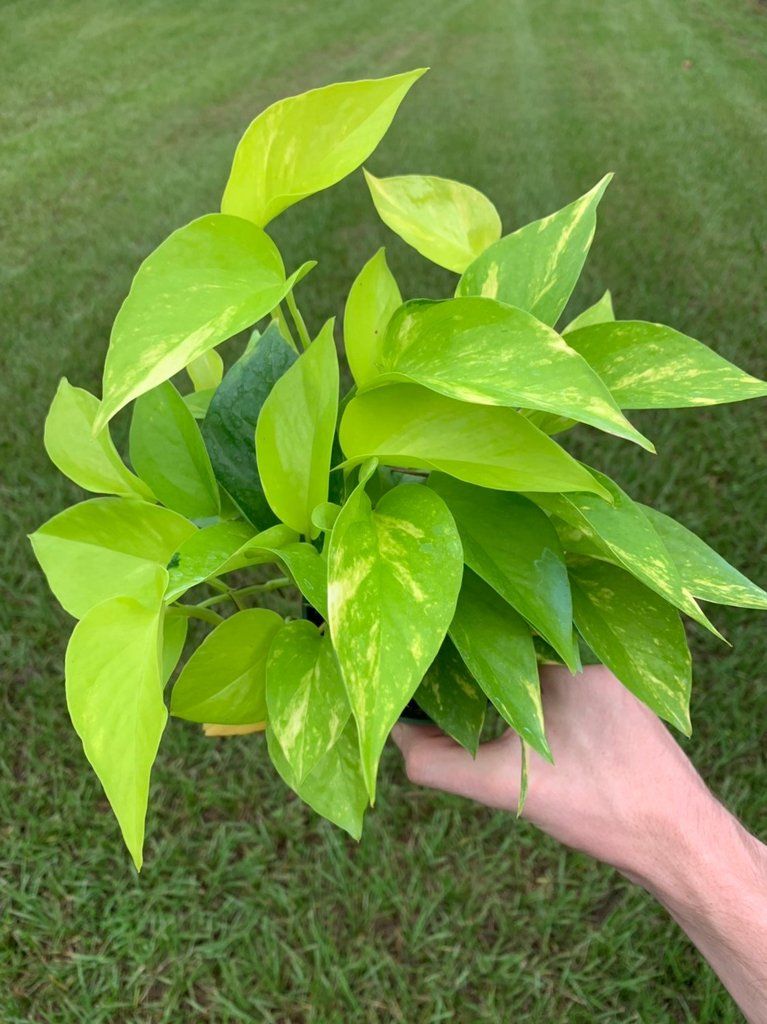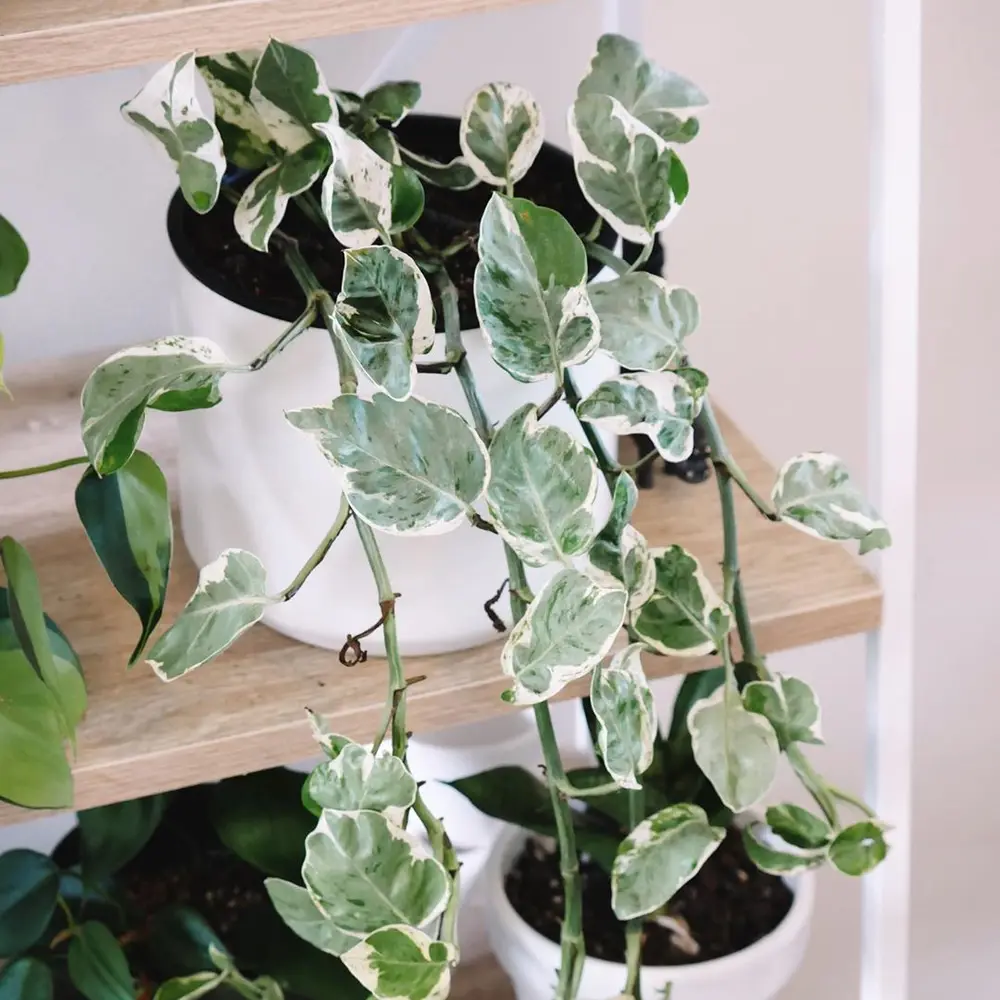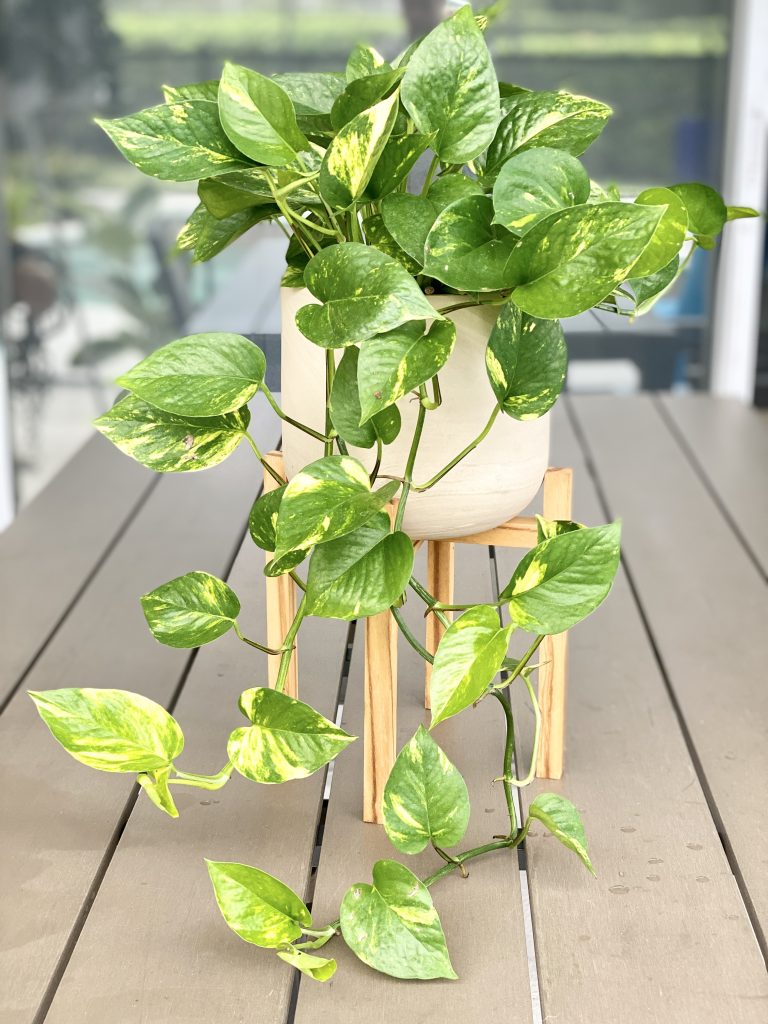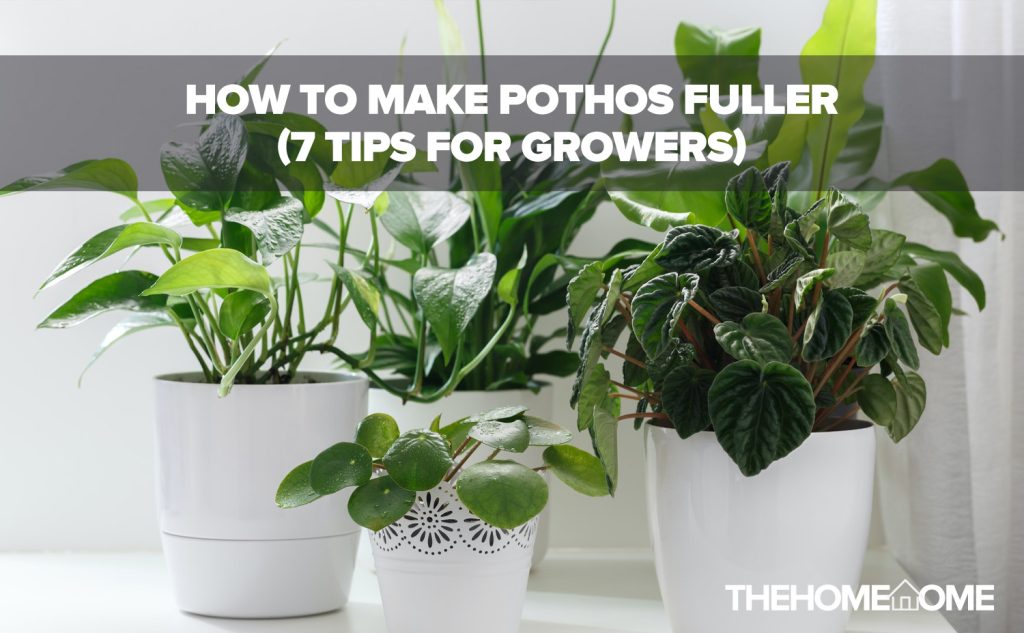Houseplants are lovely decorations for your home or garden, when they are fuller or bushier, do you want to learn how to make your pothos houseplants fuller?
Although pothos plants can climb and trail great distances around your home or office, it doesn’t have to be that way. It is also possible to train your pothos to be stable, less trailing, and fuller houseplants.
You can make pothos fuller by; pruning twice a year, watering right, using balanced fertilizers, exposure to proper lighting, repot in fresh soil, and exposure to the right room temperature
Pothos plants are one of the least demanding houseplants, one can own. It can easily grow in adaptable conditions with strategic pruning, and enough sun and water. Read on to find out the simple easy steps on making your pothos plant fuller and healthier.
7 Tips to Make Pothos Plants Grow Fuller
Pothos also known as (devil’s ivy, money plant, silver vine, etc.) is one other the most popular owner houseplants. Its ability to purify indoor air, and its prolific, attractive, and trailing vine-like appearance, make it an ideal houseplant for both your home and office.
Here are the highlighted techniques to follow, to make your pothos fuller:
- 1. Properly Prune Your Pothos
- 2. Keep it exposed to enough lighting
- 3. Water it adequately
- 4. Carefully fertilize your pothos
- 5. Repot with quality well-draining soil
- 6. Exposure to the right room temperature
- 7. Control Insects and Diseases.
Let’s dive in:
1. Properly Prune Your Pothos, Twice A Year
The best way to make pothos fuller is to prune twice a year, in spring and fall. It is best to prune during their growing season, as the plant can quickly recover to grow healthy, and sturdy. Pothos requires a proper pruning routine, if not pruned, the stems will keep trailing and your plant will look thinner.
You need sterile pruning shears or sharp scissors, garden gloves, a hand trowel, a watering can, and a paper towel or newspapers to lay underneath the plant.

When pruning, simply take your pruning shears and cut off the stems growing out and down. Take note to cut just below a leaf node, to encourage new growth from the branch and you’re avoiding leaving any bare stem without new growth.
Afterward, you can trim the stems a bit, and use them as cuttings for propagation.
2. Keep it Exposed to Enough Proper Lighting
Pothos are tropical plants that require the right amount of indirect sunlight or lighting.
Plants grow towards the sun, therefore place your plant on the west or east-facing window with enough sunlight or lighting reflecting.
Ensure to monitor your plant, to check for yellowing or whitish foliage (leaves), which is a sign that your plant is exposed to, too much direct sunlight. Also if the plant looks thinner or leggy, it is not getting enough lighting, then opt to place your plant at a well-lit location around your house.
3. Water Your Pothos Adequately
Plan a required watering schedule for your plant, if you want them to grow healthy and fuller, the same applies to pothos plants. If you notice browning or curling up of leaves, your plant is dehydrated.
Ensure to water your plant with a generous drink, until some water flows through the drainage holes. It is best to water your plant when the soil is fairly or completely dried and avoid overwatering your plant as that leads to root rot.
Simply do a sticky test to check when your plant is ready for watering. Slightly stuck your finger into the soil, if the soil sticks to your fingers or feels wet, then wait till it is dry to water them again.

4. Carefully Fertilize Your Pothos
Fertilizer is not usually necessary for pothos plants, however, fertilizers act as a nutrient boost to encourage fuller, new denser foliage, and vibrant colors. Choose fertilizers with a balanced formula, i.e the same amount of nitrogen, potassium, and phosphorus.
It is advisable to follow the manufacturer’s guidelines or directions for application and the right dilution to prevent burning your pothos. You may use compost or liquid seaweed solution to fertilize the soil, at least once or twice a month.
If you’re using a liquid fertilizer, dilute it with water in a watering can and pour it onto the pot.
It is not recommended to fertilize a water-growing pothos plant or over-fertilize your plant. If you suspect fertilizer build-up in the soil, you can either replant with new soil or drench the soil repeatedly with water until it drains.
5. Repot With Quality Well-Draining Soil
This technique works best for pothos plants that are planted with soil. If it is a water-growing pothos plant, this method is not necessary as it may damage the particular plant.
As regards a soil-growing pothos plant, you may need to report with fresh soil, if you do not notice growth with your plant. The soil potting mix should be high-quality and well-draining, as it encourages new growth and new foliage in your plant.
Additionally, if you notice your plant has outgrown the potting size or is root bound, then it is advised to repot your plant in a bigger pot size to boost growth and make it fuller.

6. Exposure To The Right Room Temperature
Pothos plants require the ideal temperature of 65°F-85°F to grow healthy and fuller. Temperatures lesser or higher are neither ideal for your plant, as well as constantly changing the temperature or location your plant is placed in.
It is best to keep the room within the recommended temperature rates, as temperature stress, prolonged and direct sunlight, or intense heat may lead to limp leaves or leaf burn.
7. Control Insects and Diseases
Lastly, control of pests and diseases is vital to the growth and health of your plant. Pests such as mites, spider mites, mealybugs, insects, aphids, etc. are prone to affect pothos.
Insect-infested leaves can wither or fall off, leaving your pothos scanty and unattractive.
This can be cured either by pruning these insects or the damaged leaves. Or using pesticides/ insecticides made for pothos plants. Ensure to read and follow the labeling to avoid using it the wrong way.
Frequently Asked Questions
Why is my pothos not full?
To get that bushy fuller look, you need to properly prune your pothos twice in spring and fall. If you don’t prune them, the stems will look thinner and keep trailing.
What is the best fertilizer for pothos?
A balanced liquid fertilizer is recommended as the best fertilizer for pothos plants.
Why is my pothos leggy?
If your pothos is not receiving the necessary light requirements and is in too much shade, the plant will shoot out longer stems and won’t produce as many leaves.
Do pothos like coffee grounds?
Not all pothos varieties like coffee grounds, but the golden pothos variety does. Adding coffee grounds to their soil may help them grow fuller, and faster.
Conclusion
In simpler words, pothos plants are easy to care for and you can control their appearance easily.
You simply need to properly prune the plant, keep them under proper lighting conditions, water it, and fertilizer when needed. You should start to see it bush up and grow fuller.

